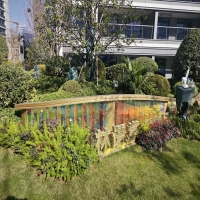Welcome to the website for landscape facilities products and knowledge.
How does the table’s design accommodate the placement of decorative items or centerpieces?
The integration of decorative elements into table design represents a sophisticated balance between aesthetic appeal and functional practicality. Modern table designs incorporate specific features that seamlessly accommodate centerpieces and decorative items without compromising usability.
Table dimensions play a crucial role in decorative accommodation. Designers typically allow for adequate surface area that provides sufficient space for centerpieces while maintaining comfortable dining or working zones. The standard table height of 28-30 inches creates an ideal visual plane for decorative arrangements, ensuring they remain at eye level without obstructing sightlines across the table.
Material selection significantly impacts decorative stability. Tables with tempered glass surfaces offer visual lightness that makes decorative items appear to float, while solid wood tables provide substantial bases that anchor larger centerpieces. Many contemporary designs incorporate transitional materials like resin or composite tops that resist damage from decorative items while providing secure footing.
Structural considerations include integrated features specifically designed for decorative enhancement. Some tables incorporate subtle recessed areas or raised edges that naturally contain centerpieces, preventing accidental displacement. The strategic placement of table legs and supports creates stable zones for heavier decorative objects while maintaining overall balance and proportion.
Surface treatments and finishes further enhance decorative compatibility. Matte finishes reduce glare that might compete with decorative elements, while textured surfaces provide natural friction that secures items in place. Designers often consider how different lighting conditions interact with both the table surface and decorative pieces, creating harmonious visual relationships.
The evolution of table design continues to prioritize decorative integration through innovative approaches. Extendable tables now feature seamless mechanisms that maintain decorative integrity when expanded, while modular designs allow for customized configurations that highlight different decorative arrangements. These thoughtful design elements ensure that tables not only serve their primary function but also provide an elegant canvas for personal expression through decorative items.
Related search:

Recommendation
Metal and acrylic color-changing combined curtain wall for large-scale public landscape facilities